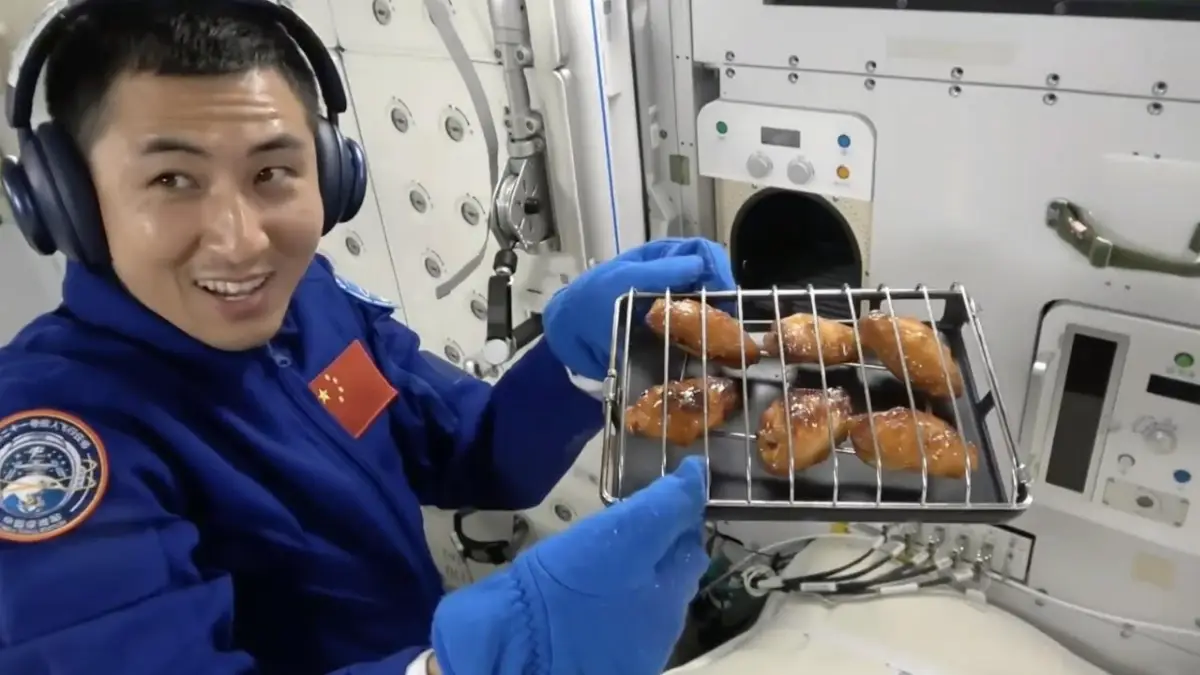
China: Cutting-edge oven for "stellar" steaks
Hot air cooking and waste collection available to the Shenzhou-21 crew

China is also challenging the world in high-altitude cooking. Footage of the Shenzhou-21 spacecraft crew cooking chicken wings, skewers, and steaks in a hot-air oven has gone viral in the past few hours. The video broadcast from the space station shows space engineer Wu Fei , a member of the Shenzhou-21 crew, placing the meat in the oven and then removing it after cooking for just under 30 minutes.
The presence of two astronauts from Inner Mongolia—the aforementioned Wu Fei and Wang Jie —a region renowned for its mutton and beef, facilitated the preparation of black pepper steaks, which, as the images show, delighted the six astronauts on board. The spacecraft was launched into orbit on Friday evening and is scheduled to return to Earth on November 5th.
According to Chinese media reports, the oven installed on Shenzhou-21 is equipped with unique enhancements that set it apart from conventional ovens, including technologies for temperature control, residue collection, high-temperature catalysis, and multilayer filtration. This allows it to cook any food without releasing any smoke in orbit, meeting the space station's oily fume emission standards. The oven and its purification system have undergone rigorous testing to meet the space station's access conditions and operate continuously and reliably for up to 500 cycles.
Using the oven to prepare food represents the latest advancement in the Chinese space station's life support system. According to the center, the Shenzhou-21 mission expanded the food selection to over 190 items and extended the menu cycle to 10 days, allowing astronauts to bake fresh vegetables, dried fruit, cakes, and meats during their stay in orbit.
Since China's manned space program entered the space station application and development phase, ground-based researchers have continuously improved the variety, texture, flavor, appearance, and nutritional value of space food through technological innovation and process improvements, better meeting the dietary needs of astronauts.
Furthermore, new progress has been made in the space station garden. Since the Shenzhou-16 mission, the center has conducted research and testing on growing plant substrates in orbit. Using regenerative substrates, long-term controlled-release fertilizers, and microporous water conduction technology, the garden has achieved effective water and nutrient delivery in microgravity conditions.
So far, ten plots of seven plant species have been grown, including lettuce, cherry tomatoes, and sweet potatoes, providing the astronauts with 4.5 kg of fresh fruits and vegetables. Among these, lettuce and cherry tomatoes have achieved a complete growing cycle, from seed to seed.
EFA News - European Food Agency